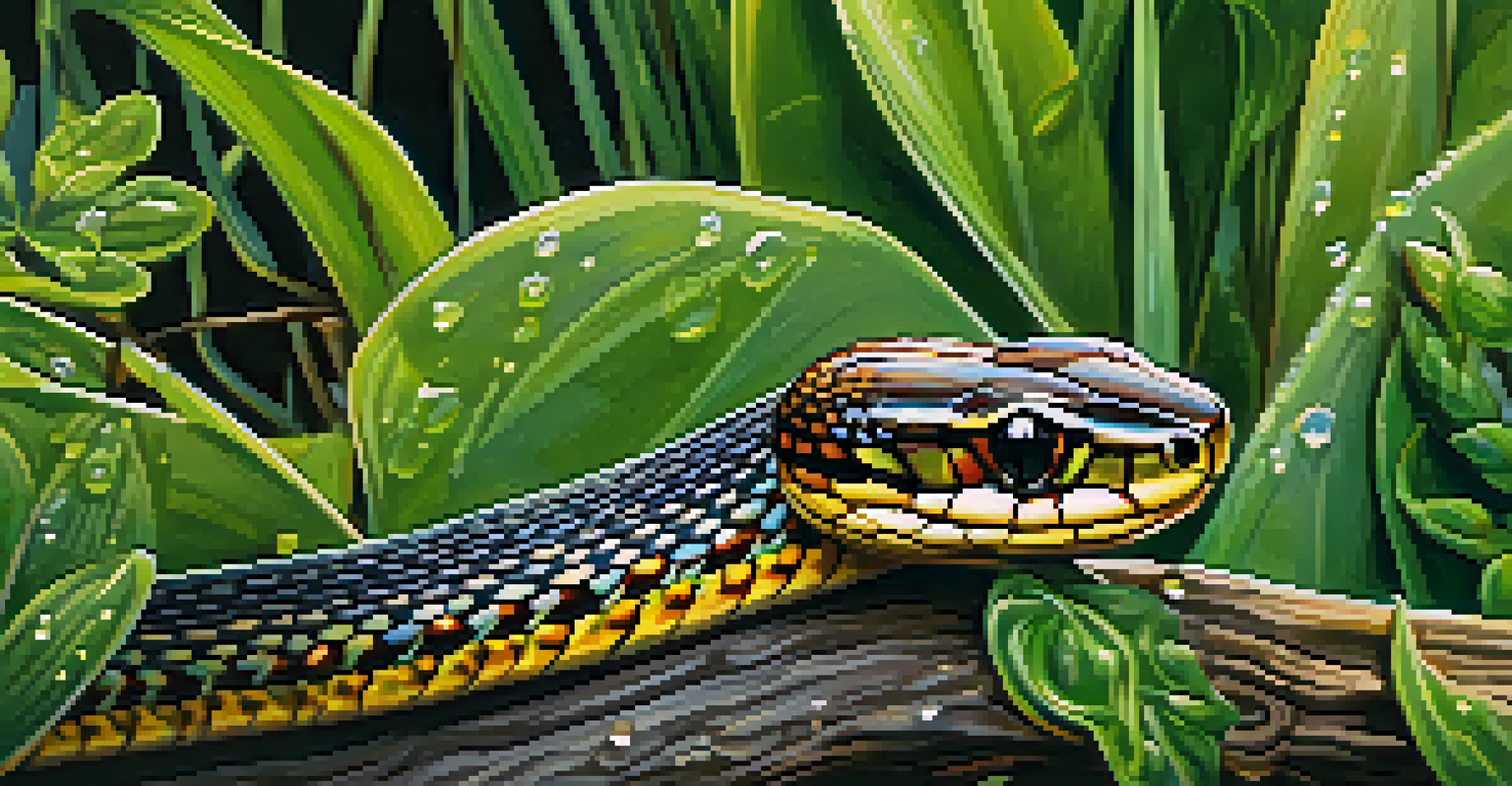California's Endemic Fauna: Species Found Nowhere Else

Understanding Endemic Species in California
Endemic species are organisms that are native to and restricted to a specific geographical area. In California, this concept is particularly fascinating due to the state's diverse ecosystems, ranging from coastal areas to mountainous regions. This unique biodiversity allows for a variety of species to thrive, many of which cannot be found anywhere else in the world.
The ultimate test of a moral society is the kind of world that it leaves to its children.
The reason for such high levels of endemism in California lies in its varied climate and geography. The state's diverse habitats, including deserts, forests, and wetlands, create numerous niches that support different forms of life. As a result, California is home to an impressive array of endemic fauna, each adapted to its specific environment.
Understanding the importance of these endemic species is crucial for conservation efforts. Protecting these unique creatures not only helps maintain ecological balance but also preserves the natural heritage of California. The loss of any endemic species could mean the disappearance of an entire chapter of the state's biodiversity.
California's Endemic Mammals: A Closer Look
Among California's endemic fauna, mammals hold a special place. One notable example is the San Joaquin kit fox, a small, agile fox that inhabits the arid grasslands of California's San Joaquin Valley. This species has adapted to its specific habitat, showcasing the unique evolutionary paths that occur in isolation.

Another fascinating endemic mammal is the Channel Island fox, found only on six of the eight Channel Islands. This small fox has evolved distinct characteristics tailored to its island environment, making it a great example of how geographical separation influences species development. The Channel Island fox is currently the focus of conservation efforts due to its vulnerable status.
California's Unique Endemic Species
California is home to numerous endemic species across its diverse ecosystems, making it a hotspot for biodiversity.
These mammals are not just interesting because of their uniqueness; they also play vital roles in their ecosystems. By maintaining prey populations and influencing vegetation, endemic mammals help sustain the ecological balance of their habitats, highlighting the interconnectedness of life in California.
Birds of California: Unique Avian Species
California is also home to a variety of endemic bird species that are a delight for birdwatchers and nature enthusiasts alike. One such bird is the California condor, one of the world's most endangered birds. With an impressive wingspan of up to ten feet, this majestic bird is an icon of California's wildlife conservation efforts, having been brought back from the brink of extinction.
In every walk with nature one receives far more than he seeks.
Another remarkable example is the island scrub-jay, which inhabits the Channel Islands. Unlike its mainland relatives, this jay has developed unique traits and behaviors suited to its specific environment. The island scrub-jay's distinctiveness serves as a reminder of how isolation can lead to the evolution of specialized species.
The preservation of these endemic birds is crucial not only for maintaining biodiversity but also for the health of ecosystems. Birds play essential roles as pollinators and seed dispersers, which are vital for plant reproduction and habitat sustainability.
Reptiles and Amphibians: California's Unique Cold-Blooded Creatures
California's endemism extends to reptiles and amphibians, boasting several species found nowhere else on Earth. The Sierra Nevada yellow-legged frog is a prime example; this amphibian is adapted to the cold, high-altitude lakes of the Sierra Nevada mountains. Its plight has drawn attention due to habitat loss and disease, highlighting the need for conservation efforts.
Another interesting endemic reptile is the California legless lizard, which, despite its name, is not a snake but a lizard that has evolved to live underground. This adaptation has allowed it to thrive in its specific habitat, showcasing the incredible diversity of reptilian life in California. Its unique morphology and lifestyle are perfect examples of evolutionary adaptation.
Conservation Efforts Are Vital
With many endemic species threatened by habitat loss and climate change, conservation initiatives are crucial for their survival.
These cold-blooded creatures contribute to the ecosystem by controlling insect populations and serving as prey for other wildlife. Their specialized adaptations illustrate the complex interdependencies present in California's diverse environments, making their conservation critical.
Invertebrates: California's Hidden Endemic Treasures
While they often go unnoticed, invertebrates make up a significant portion of California's endemic fauna. One such example is the San Francisco garter snake, which is not only strikingly beautiful but also plays a crucial role in its ecosystem. This snake is dependent on specific habitats, such as wetland areas, making its conservation vital for ecological balance.
Another lesser-known endemic invertebrate is the California native bee. These bees are essential pollinators, supporting both wild and cultivated plants. With over 1,600 species of native bees in California, many are highly specialized and tied to specific flowers, demonstrating the intricate relationships within ecosystems.
Protecting these invertebrates is key to preserving the health of California’s ecosystems. Their roles as pollinators and decomposers are often overlooked, yet they are fundamental to the survival of many plant and animal species, showcasing the interconnectedness of life.
Conservation Efforts for Endemic Species in California
With many endemic species facing threats from habitat loss, climate change, and urban development, conservation efforts are more critical than ever. Organizations and government agencies are working tirelessly to protect these unique creatures and their habitats. Initiatives include habitat restoration, legal protections, and captive breeding programs aimed at ensuring these species survive for future generations.
One notable program is the California Condor Recovery Program, which focuses on breeding condors in captivity and releasing them into their natural habitat. This initiative has helped increase the population of this majestic bird from just 27 individuals in the 1980s to over 500 today, showcasing the power of dedicated conservation efforts.
Public Awareness Supports Conservation
Engaging communities in conservation efforts fosters a sense of stewardship for California's unique wildlife.
Community involvement is also crucial in these conservation efforts. Education and outreach programs encourage residents to participate in habitat restoration projects and become advocates for their local wildlife. By fostering a sense of stewardship for California’s unique endemic species, we can ensure their survival and the health of the ecosystems they inhabit.
The Future of California's Endemic Fauna
Looking ahead, the future of California's endemic fauna hinges on proactive conservation measures and public awareness. As climate change continues to impact habitats, ongoing research and adaptive management strategies will be essential. Scientists are studying how these species respond to environmental changes, which can inform conservation strategies and help mitigate potential threats.
Moreover, collaboration among various stakeholders, including government agencies, non-profits, and local communities, will be vital to ensure comprehensive conservation efforts. By working together, we can create a more resilient ecosystem that supports these unique species and their habitats.

Ultimately, the survival of California's endemic fauna is not just about preserving individual species but about maintaining the rich tapestry of life that defines this incredible state. By appreciating and protecting these unique creatures, we contribute to a healthier planet and a legacy for future generations.